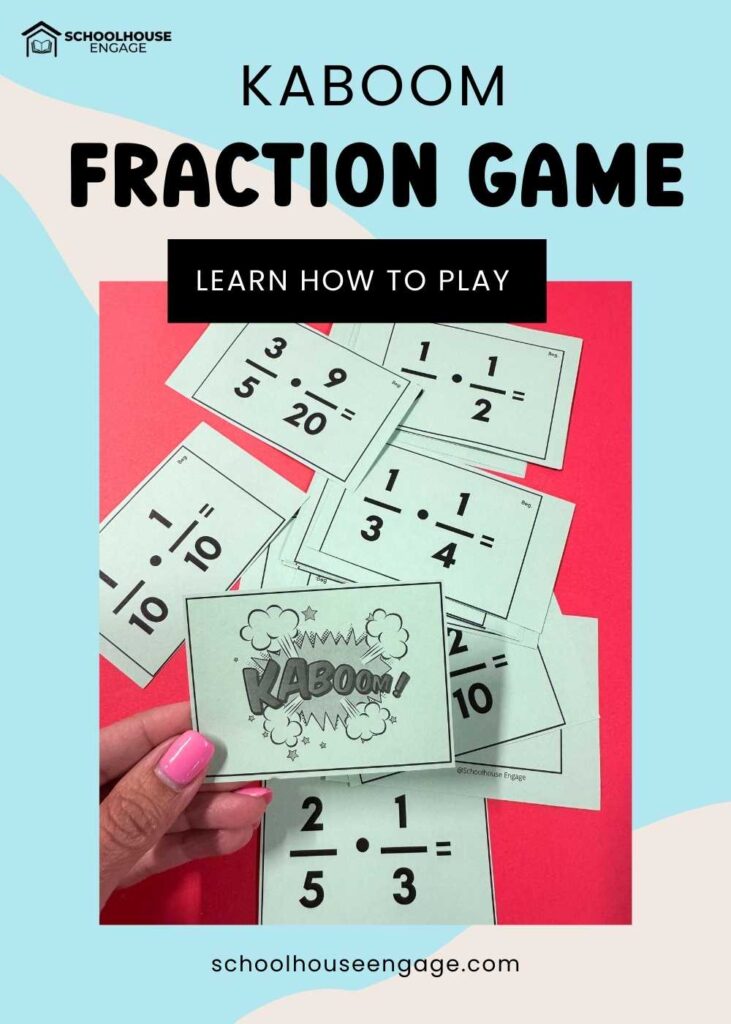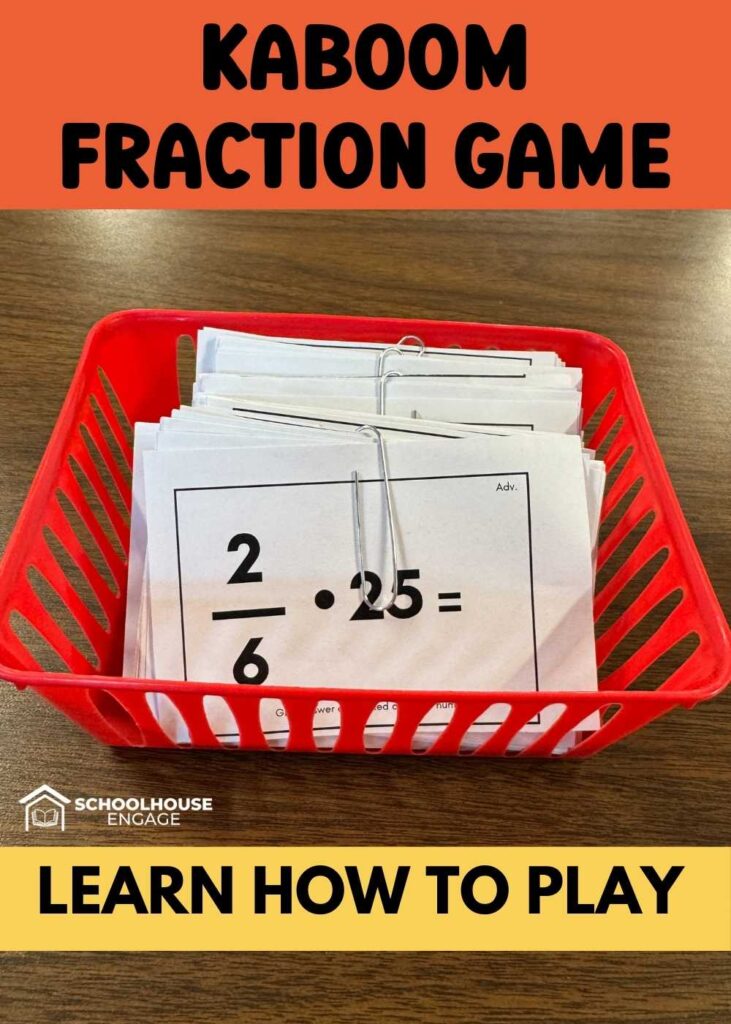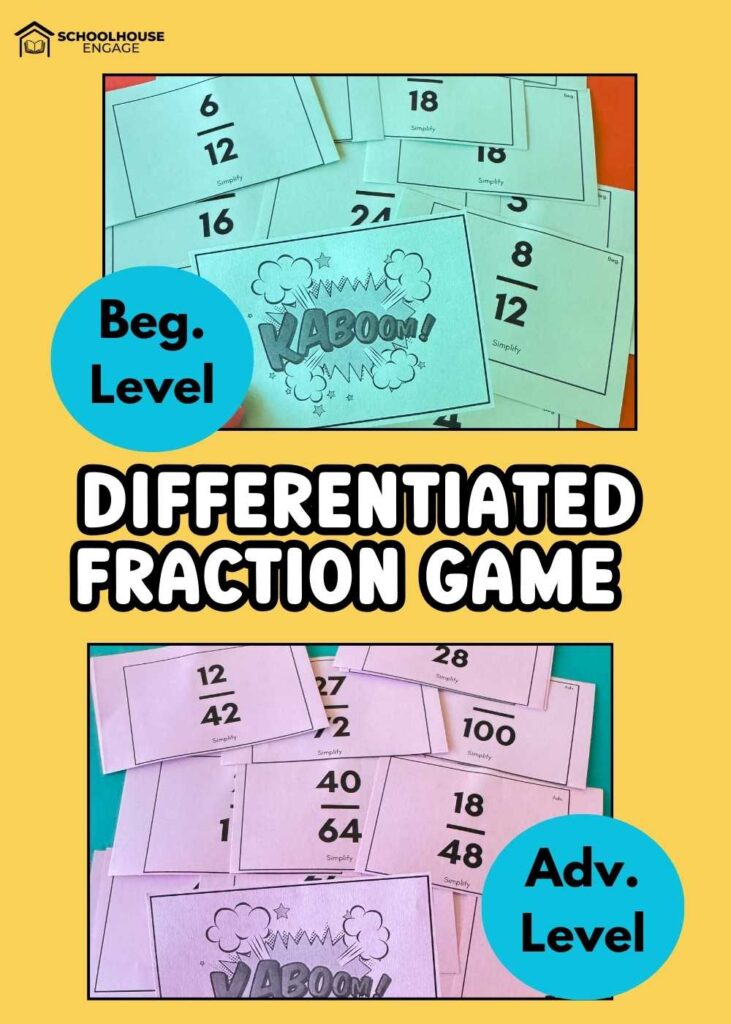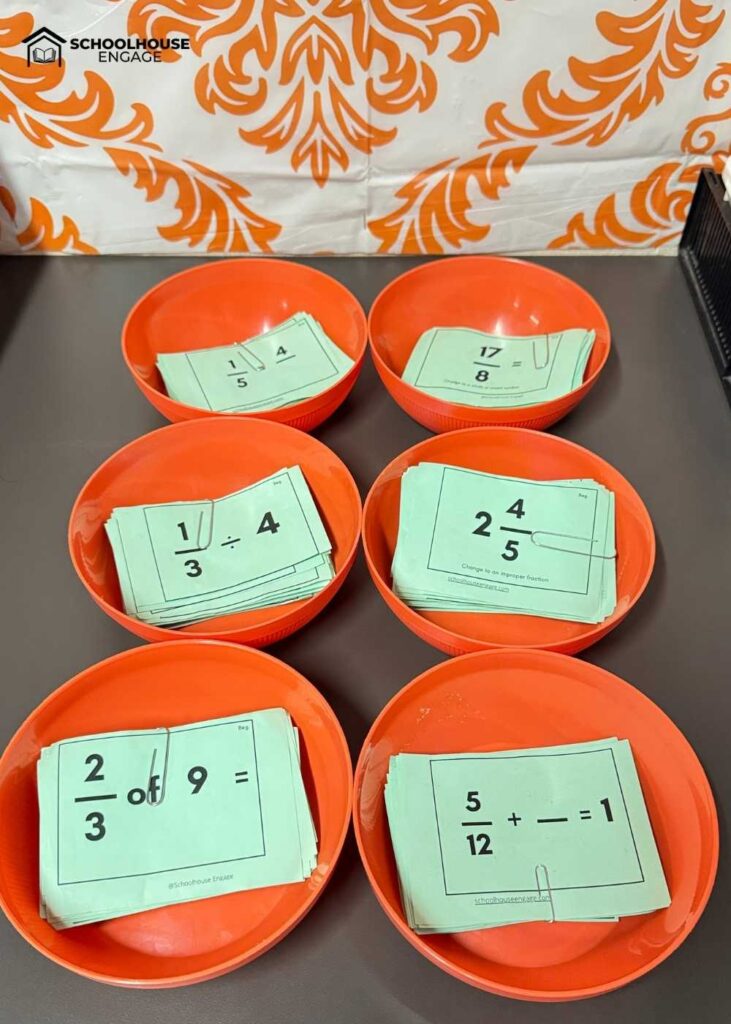I’m always on the lookout for fresh, hands‑on fraction fluency activities that make practice fun for my 5th-graders—and Kaboom! fits the bill perfectly.
My students love playing this game, and I have a few tips to make it extra exciting. The best part about Kaboom is that it’s simple to prep, and this fraction Kaboom card game is differentiated for all learners.
Why I Love Kaboom Game for Fraction Practice
Fluency with fraction operations—whether finding equivalent fractions or converting them to decimals—is essential before tackling harder concepts and multi-step math problems. And let’s face it: just handing out worksheets to get students to practice these skills is boring.

Kaboom! turns routine practice into play. Students are engaged and learning without even realizing it!
One of my favorite parts about the Kaboom game I created is its differentiation. My students’ math levels range from 3rd to 6th grade (I have 5 SPED students who mainstream in my classroom). I include both beginner and advanced cards for each fraction skill, so every child has some level of success. The skills included are:
- Equivalent Fractions
- Simplify Fractions
- Add & Subtract Fractions
- Multiply a Fraction by a Fraction
- Divide Fractions
- Multiply a Whole Number by a Fraction (fraction result)
- Multiply Whole Number by a Fraction (whole‑number result)
- Improper → Mixed Number
- Mixed Number → Improper Fraction
- Convert to Decimal
- Add to One Whole and Subtract from Whole Numbers

Here’s How My Students Play Kaboom!
Game Setup
- Cut out the fraction problem cards and mix in the KABOOM! cards. Have students shuffle them and place them into a cup or container.
- Divide the class into groups of four—that size keeps turns quick and fun.
- Explain the rules and demonstrate how to play with a few volunteer students
Rules of the Game
- Students take turns pulling a card and solving the problem aloud within an allotted time.
- One student checks the answers with an answer key, or the whole group refers to it if there’s a disagreement.
- Correct answers stay in the student’s pile; incorrect answers or slow responses go back in the container.
- If a KABOOM! card is drawn, that student returns all their cards to the container
Winning and Rewards
I set a 5-7‑minute timer for each round. When it dings, whoever has the most cards wins classroom money. Then we reshuffle and play again, rotating who checks the key so everyone gets a turn.
It’s important to provide some incentive to the winner, and make a good one! That is what keeps the game fun!
What Makes This Kaboom Fraction Game Different?
These elementary math games are differentiated with beginner and advanced levels, so there are two sets.
In the beginning of the year, when I first introduce a new concept, I use the beginner-level cards; once we have practiced that skill, we switch to the advanced level, and my GATE or Advanced students are ready for the challenge.
My struggling students can stick to the beginner level in order to have some success and get more practice.
The best part about the answer key is that all the answers are on one page, so it’s easy to find the answer, and student directions are on the same page too. Yay, to saving paper!

Spruce It Up with Fraction Game Variations
The fraction cards can be printed alone without the Kaboom cards and used in other ways. Here are a few ideas:
- Speed Challenge: Have students time each other to see who can solve the problems on the cards the fastest.
- Memory Match: Print two decks, lay cards face‑down, and have kids find matching pairs. Every time they turn over a card, they must answer the question. If they find matching cards, they get to keep the cards. The person with the most cards at the end of the game wins.
- Fraction War: Have students divide the cards in half, draw simultaneously, and the first person who solves the problem correctly keeps both cards. The person who has the most cards wins.
- Whole Class Kaboom: Toward the end of the year, when you have completed teaching all fraction operations, get your whole class into groups of 4 or 5 and play all the games. Set a 7-minute timer, and when time is up, have students rotate the container so every group gets a new fraction operation to play with. I set up different games in bowls.

Use Kaboom for Year-Round Review
Kaboom! is a hands‑on fraction review game that works in so many settings: math centers, small‑group lessons, at‑home practice, or as a whole‑class energizer. You don’t need anything fancy—just the cards and a container—so you can get started in minutes.
Frequently Asked Questions About Kaboom!
Q: Can I integrate Kaboom! into my existing math station rotations?
A: Yes! Kaboom! fits seamlessly into math centers or station rotations. Place the shuffled deck and timer at one station, and assign a partner or small group to play while others work on different activities. Rotate every 7–10 minutes so every student experiences the game without disrupting your lesson flow.
Q: How can I differentiate for students who are still mastering basic fraction concepts?
A: Use the beginner-level cards at first, and consider pairing beginner or struggling learners with a peer buddy who can support them. You can also extend the time limit or allow students to use scratch paper for those who need it.
Q: What materials do I need beyond the printable cards?
A: You’ll need scissors or a cutting board to cut the cards, a container (cup, box, or bag) to hold the deck, and a timer (I use the timer on my ViewSonic board and enlarge it). Optional extras include colored cardstock for durability, but I just print them on regular copy paper
Q: How many students can play at once?
A: 3-5 students work best, but I do not recommend more than 5 because it takes too long for each student to have a turn.
Q: Can I reuse the cards year after year?
A: I use my cards year after year, and I do not laminate them. Seriously, who has time for that? If they start looking beat up, I just toss them and make new copies, but it takes a few years for that to happen.

Ready to Bring Kaboom! to Your Classroom?
If you’re looking for a resource that’s easy to prep, differentiated, and guaranteed to get your students excited about fraction operations, grab my Kaboom! Fraction Operations Game today on Teachers Pay Teachers. Buy them individually, or get the bundle. You got this! Giselle
For more blog posts about Fractions, check out my other posts:
How to Convert Improper Fractions and Mixed Numbers: Proven Strategies for 5th Grade Teachers
Step-by-Step Directions To Teach Equivalent Fractions in 5th Grade
Teaching Adding and Subtracting Unlike Fractions with Visual Models
